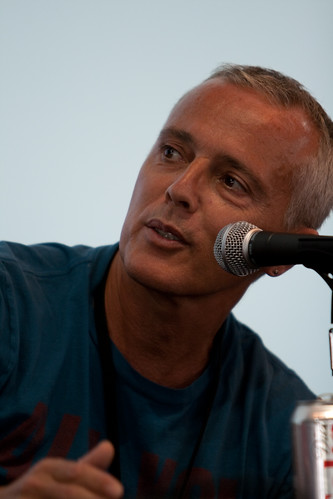Tiger Woods Slow Climb Back
Yesterday I watched Tiger Woods deliver his apology to his friends and his public. I was really curious from a public relations perspective what he would say, how he would say it, would he be convincing, and of course how he appeared. Obviously, it was very late in coming. He and his team went against every dictate in how they handled this crisis. But for me, the apology in its entirety marks his slow climb back. I was struck by a number of things but probably most of all by his appearance. I hope he makes it all the way back.
Are you Stupid? Olympic Gold Medalist Sven Kramer Asks
On the first day of the Olympics, Dutch speedskater Sven Kramer won a gold medal. He was then asked by a reporter to state his name, country and what he just won. Here’s his response. His response is a great reminder to all in and out of the media to do your homework!
24% of US Small Businesses Now Engaged in Social Media Survey Says
American small businesses are pushing the limits on new ways to improve efficiency in the prolonged downturn, including a steady increase in social media adoption according to results of a study from the Small Business Success Index™ (SBSI) sponsored by Network Solutions and the Center for Excellence in Service at the University of Maryland’s Smith School of Business . The SBSI reports social media adoption by small businesses has doubled from 12 percent to 24 percent in the last year.
The SBSI found that nearly one out of five small business owners are actively using social media in their business. Small businesses are increasingly investing in social media applications, including blogs, Facebook® and LinkedIn® profiles. The biggest expectation small business owners have from social media is expanding external marketing and engagement, including identifying and attracting new customers, building brand awareness and staying engaged with customers. Sixty-one percent of the respondents indicated that they use social media to identify and attract new customers.

![]() photo credit: harrietbarber
photo credit: harrietbarber
“Social media levels the playing field for small businesses by helping them deliver customer service,” says Janet Wagner, director of the Center for Excellence in Service at the University of Maryland’s Robert H. Smith School of Business. “Time spent on Twitter®, Facebook® and blogs is an investment in making it easier for small businesses to compete.”
Small business owners use social media to attract new customers:
- 75% surveyed have a company page on a social networking site
- 61% use social media for identifying and attracting new customers
- 57% have built a network through a site like LinkedIn
- 45% expect social media to be profitable in the next twelve months
Small business owners still have concerns with social media:
- 50% of small business social media users say it takes more time than expected
- 17% express that social media gives people a chance to criticize their business on the Internet
- Only 6% feel that social media use has hurt the image of the business more than helped it
To download a copy of the Small Business Success Index and also find out how your business scores on the six key dimensions of small business success, visit www.growsmartbusiness.com.
Has your business adopted social media? What is your company doing? What have been the results so far?
What Ben Bernanke Knows About Communication
What does Federal Reserve Chairman Ben Bernanke know about communicating that others don’t? In a recent article for Harvard Business, leadership consultant John Baldoni writes that it is Bernanke’s willingness “to speak last”. In Baldoni’s article “How to Communicate Like Ben Bernake” the author notes:
Bernanke, who established his academic credentials by researching and writing about the Great Depression, is first and foremost, as E.J. Dionne noted in the same interview, a straightforward speaker — people understand him. Bernanke, according to Brooks, also worked hard during the financial crisis to keep discussions going, even calling people back after a meeting to follow up. In this way, Bernanke seems more a legislator, one who works with peers, than an executive, one who dictates.
Baldoni recommends the following tips to keep conversation flowing:
Open up. If you want to keep discussion going, you should keep talking. If the topic is critical to the future of the company, throw out your calendar. Meet with your colleagues, even those who don’t agree with you, until you come to consensus, even if it’s only an agreement to keep talking. (Mediators employ this technique to help resolve disputes between adversaries.)
Give (a little) up. The secret to good conversation is give and take. Those who feel the need to impose their will gain little by talking. Those who want to reach consensus learn how to make concessions over small things to gain agreement over major issues. Dialogue is essential to facilitating that process.
Follow up. Important matters are seldom resolved with a single conversation or a single meeting. You will need to meet multiple times. Keep the dialogue going by following up with participants between meetings. The act of simple conversation can lead to greater understanding off issues and people.
You can read Baldoni’s entire article here.




